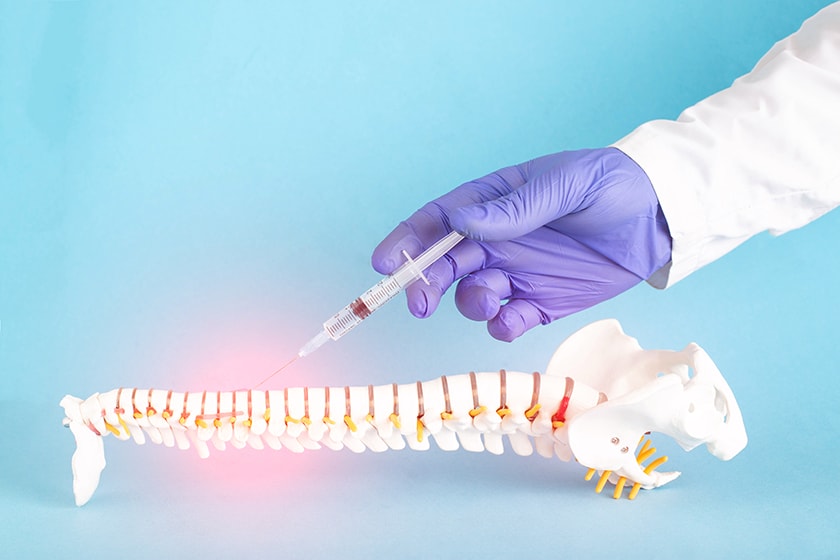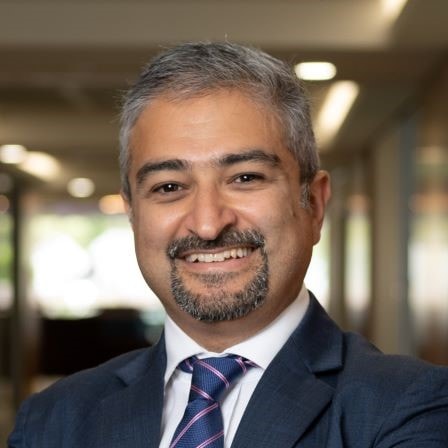It’s estimated that almost half of the world’s population will suffer from a headache at some point during their life, with fewer numbers experiencing cervicogenic headaches ─ a secondary headache resulting from a primary condition found in the cervical spine.
Cervicogenic headache (CeH) is a clinical syndrome that involves various cervical structures, primarily the upper cervical spinal nerves, facet joints, intervertebral discs, and other joints. Conservative management options for CeH have limited efficacy, making interventional approaches a viable, drug–free treatment option.
Occipital nerve blocks
Due to the convergence of upper cervical and trigeminal sensory pathways, CeH pain can refer from the neck to the forehead, temple, or orbit. Blocking the greater occipital nerve (GON) and lesser occipital nerve (LON) can often provide significant pain relief. Repeat injections may be necessary for sustained pain relief. Alternatively, blocks may be combined with pulsed radiofrequency treatment which may substantially prolong treatment effect. These blocks are commonly performed as a day procedure with minimal discomfort for the patient.
Facet joint injections
Facet joint arthritis is the most common cause of persistent neck pain. While upper facets can refer pain to the occiput, and even the face, lower facets can refer pain to the shoulder and between shoulder blades. Facet joint injections have shown beneficial effects in the treatment of CeH and headache.
For instance, injections targeting the C2–C3 facet joints can improve headache frequency, analgesic response, and employment status in many neck pain and headache sufferers. These blocks require expert knowledge of radiographic anatomy and are always performed with the use of live X-ray. Discomfort is typically minimal.
Atlantoaxial (AA) joint intra-articular injection
Atlantoaxial joint is often ignored as a source of neck and head pain. In the elderly, atlantoaxial osteoarthritis is often a result of degenerative process while in the young, trauma is often the culprit. Pain is unilateral and triggered by rotation.
Intra-articular injections targeting the AA joint can often provide relief in patients with CeH. However, data on long-term effects are limited. These injections have shown a significant decrease in pain scores immediately after the procedure, but their long-term benefits require further investigation.
Radiofrequency ablation
Radiofrequency ablation (RFA) may be considered for severe or refractory CeH cases. This includes coagulating small pain fibres on either side of the facet joint. Diagnostic blocks will commonly be performed prior to RFA to identify which joints are painful. Radiofrequency ablation delivers the best chance of prolonged pain relief with improvement lasting 10-12 months not being uncommon. Procedure may then be safely repeated once pain nerves regenerate. Procedural discomfort is moderate and twilight sedation is often required.
Pulsed radiofrequency
Pulsed radiofrequency (PRF) has recently emerged as an alternative to conventional RFA. This involves non-destructive heating of the pain fibres thus modulating their activity. The main advantage of pulsed radiofrequency is how well it is tolerated and its excellent safety profile. PRF is commonly used to treat greater occipital and atlantoaxial joint, showing long-term pain relief.
Final thoughts
Interventional approaches play a crucial role in managing cervicogenic headache and neck pain, especially when conservative treatments prove ineffective. When successful, medication reduction or cessation is often possible and quality of life improvements can be significant. As primary care doctors it is essential to consider these techniques as potential treatment options for CeH patients who do not respond to conservative management.








